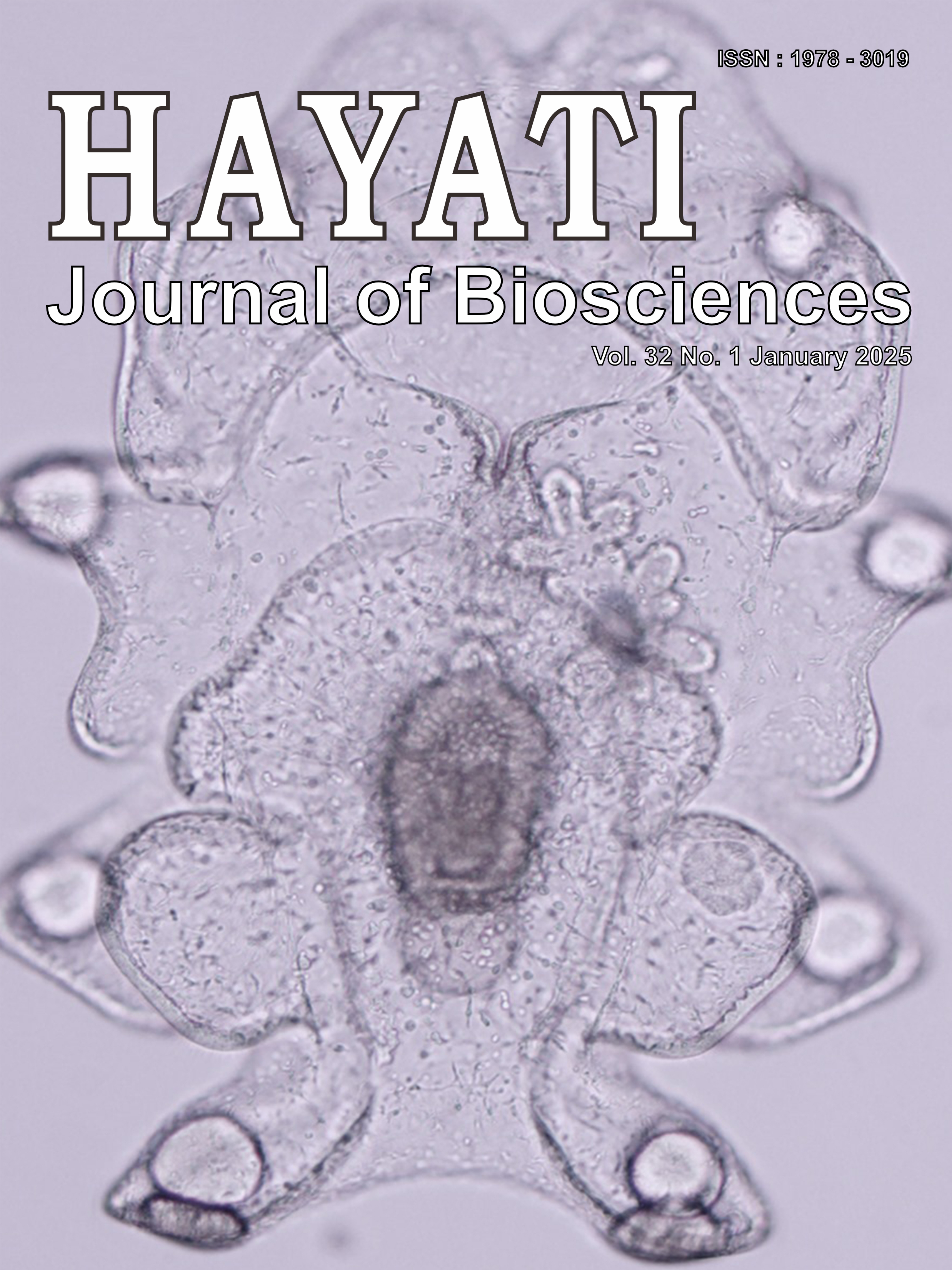Endophytic Actinomycetes of Liliaceae Plants as Biocontrol Agents of Fusarium oxysporum f.sp. cepae Causes of Basal Plate Rot Disease on Shallots
Abstract
Basal plate rot disease is one of the critical diseases in shallot plants. Control using synthetic chemical fungicides is still unable to overcome this problem, and it hurts the environment and reduces the population of essential microbes in plants. Endophytic actinomycetes have potential as biocontrol agents. They are reported to be able to inhibit the growth of pathogens, induce plant resistance, produce cell wall degrading enzymes, and promote growth. This research aims to obtain endophytic actinomycete isolates that have the potential to inhibit the growth of the fungus Fusarium. oxysporum f.sp. cepae causes of basal plate rot disease in shallot, and evaluate its inhibitory mechanism. Endophytic actinomycetes were isolated from tubers and roots of Liliaceae plants collected from shallots-production center area. The isolate obtained was tested for biosafety and continued with its inhibitory effectiveness against the fungus F. oxysporum f.sp. cepae in vitro, ability to induce resistance, and plant growth promotion test. The six best isolates were selected based on weighting using AHP and identified molecularly. The endophytic actinomycetes of Liliaceae plants can inhibit the growth of F. oxysporum f.sp. cepae up to 63.49% with an antibiosis mechanism, producing chitinase enzymes that cause lysis, induce resistance, and produce growth hormones such as IAA. Streptomyces sp. can inhibit the fungus F. oxysporum f.sp. cepae causes basal plate rot disease on shallot by producing antifungal compounds and chitinase enzymes, inducing resistance, and producing growth hormone.
Downloads
Copyright (c) 2025 Lisa Marianah, Abdjad Asih Nawangsih, Abdul Munif, Giyanto, Efi Toding Tondok

This work is licensed under a Creative Commons Attribution-NonCommercial 4.0 International License.
HAYATI J Biosci is an open access journal and the article's license is CC-BY-NC. This license lets others distribute, remix, tweak, and build upon author's work, as long as they credit the original creation. Authors retain copyright and grant the journal/publisher non exclusive publishing rights with the work simultaneously licensed under a https://creativecommons.org/

























.png) IPB University
IPB University Department of Biology
Department of Biology The Indonesian Biological Society
The Indonesian Biological Society 

